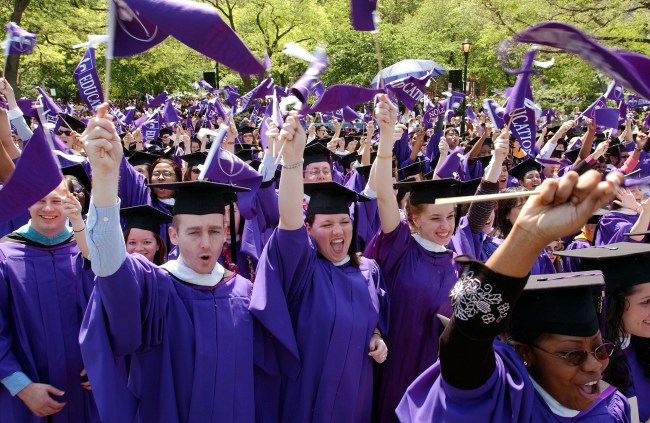
Getty Image
I know I’m not the only one who has dealt with plaguing student loan payments. Every time I made a payment to Sallie Mae, a part of me died inside and I wished that I had taken up construction post-high school. College was incredible and arguably the best four years of my life, but no one warned me of the next five years dedicated to paying for it.
And, according to CNBC, it’s only getting worse.
In 2036 (18 years from now) four years at a private university will be around $303,000, up from $167,000 today. A degree at a public university will run you $184,000, compared with $101,000 today.
The projections were made by Wealthfront, an investment platform that offers college saving mechanisms. The folks behind Wealthfront used Department of Education data on the current cost of schools coupled with expected annual inflation to estimate future costs.
Experts claim that if you start saving at your child’s birth, about one third of the money in your savings by the time they go to college will come from the interest your money has earned. But, if you wait until he or she begins high school, that number plummets to 1% and you will need to save six times as much per month to reach the same goal.
If we extrapolate those numbers to a college like Harvard University, the price becomes laughable. Currently, the price of four years at Harvard costs $266,000. In 18 years, you’ll likely be shelling out $474,500, nearly an 80 percent increase. The same numbers apply for Stanford. A half million dollars to pay for my kid to wake up at noon and discover sexual intercourse. I’m all set.
Wealthfront suggests a 529 plan, a tax-advantaged investment fund that can be used for education costs, is the best way to compound your earnings.
[h/t CNBC]